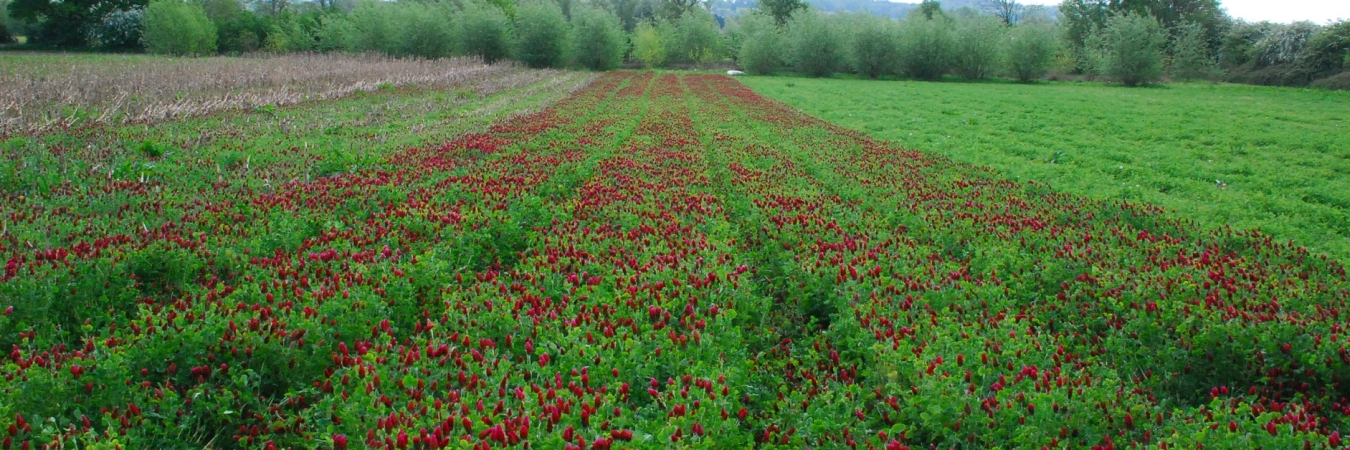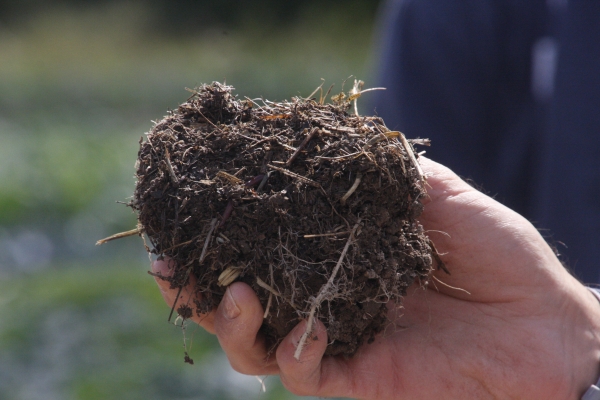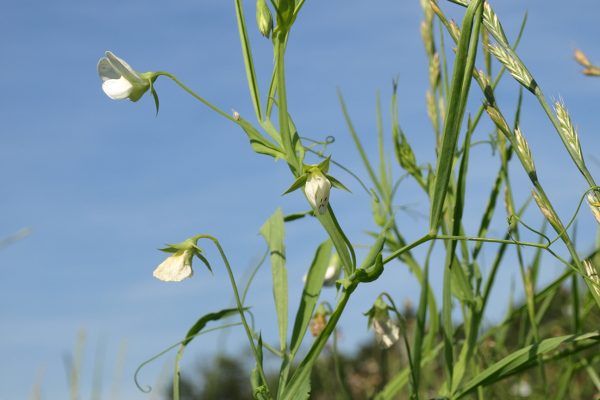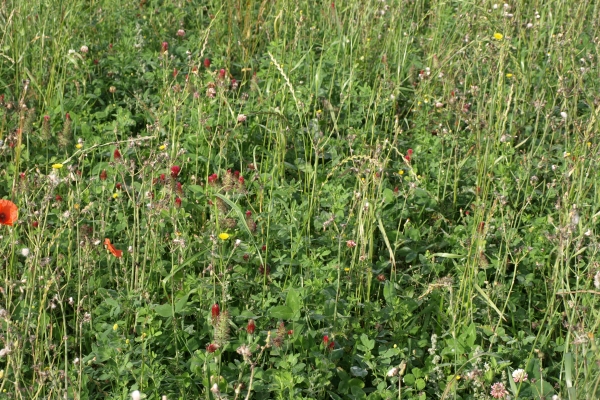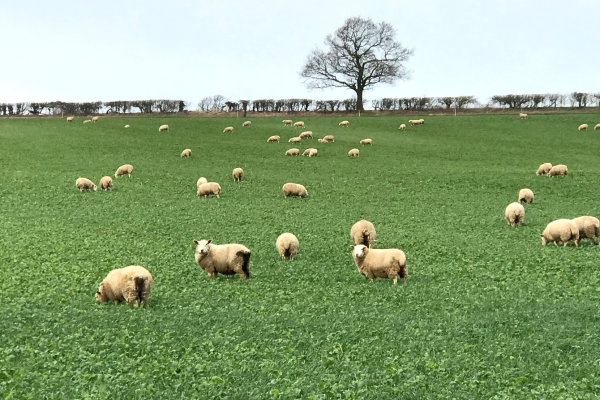Fertility building leys
IOTA Results of Organic Research: Technical Leaflet 7
Resource explained
This Institute of Organic Farming and Advice (IOTA) Technical Leaflet is an output from the Defra-funded Legume LINK (LegLink) project (Using legume-based mixtures to enhance the nitrogen use efficiency and economic viability of cropping systems).
It outlines key conclusions from the project that are useful to consider when you formulate your own seed mixtures. It recommends that they should be adapted to suit local conditions (soil pH, phosphate levels, flooding/drought risk, soil type), management (grazing, stock type, conservation, mulching), and any other objectives you may have (such as increasing insect pollinators).
The conclusions focus on:
- Advantages to more complex mixtures over simple two-way mixtures or monocultures.
- Plant species that have been found to have particularly useful characteristics, and what they are.
- The most successful multifunctional mixtures.
- Plant species found to significantly benefit bee and butterfly species.
- Benefits from including grass species in a mixture.
Findings & recommendations
- Leguminous leys are the cornerstone of most organic systems, whether they are used for grazing, conservation or mulching.
- More complex seed mixtures can have many benefits including:
- Providing greater stability to weather and climate conditions and different management regimes;
- better weed suppression characteristics;
- Slower decomposition and therefore better nitrogen (N) utilisation and;
- Extended forage availability for key insect pollinators.
- Red and white clover, black medic, birdsfoot trefoil, lucerne, sainfoin and crimson clover have been found to have particularly useful characteristics in seed mixtures. Changes in management can further enhance the benefit of some of these species for bees and butterflies.
- The balance of grass and legumes is important due to the N fixation and release processes; the grass takes up N fixed by the legumes, the legume rhizobia respond to the low soil N levels and fix more, resulting in higher overall N fixation and greater biomass.
- The annual N accumulation of ley mixtures decreases after two years.
- There is a useful note at the end of the leaflet with comments on suitability of using some of the leguminous species mentioned in the context of sheep grazing, cereal growing and grass for silage.
Related articles
The Legume LINK final report, with pointers to help you improve the efficiency of your leys, benefiting crop production and pollinators.
Using legumes and farming practices to maximise on free nitrogen (N); improve N availability, increase the amount fixed, minimise losses.
FiBL booklet offering a view on soil fertility from different angles to stimulate new thinking about a sustainable relationship to the soil.
Recording of an Organic Growers Alliance's Organic Matters 22 conference session exploring stockfree organic standards and carbon sequestration, mobile green manures, Organic-PLUS trials on fertility-building...
The important role of legumes as a food resource for pollinators and species that can help provide the forage reserves throughout the year.
Practice abstract created as part of the DiverIMPACTS project outlining some of the many advantages to more complex mixtures of leguminous leys and some of...
Video footage filmed at the ORFC 2019 of Lydia Smith from NIAB explaining a project helping to explore soil quality through re-integration of leys and...
Guidance on selecting species and managing leys to benefit pollinators, linking to the LegLink project and Countryside Stewardship options.
